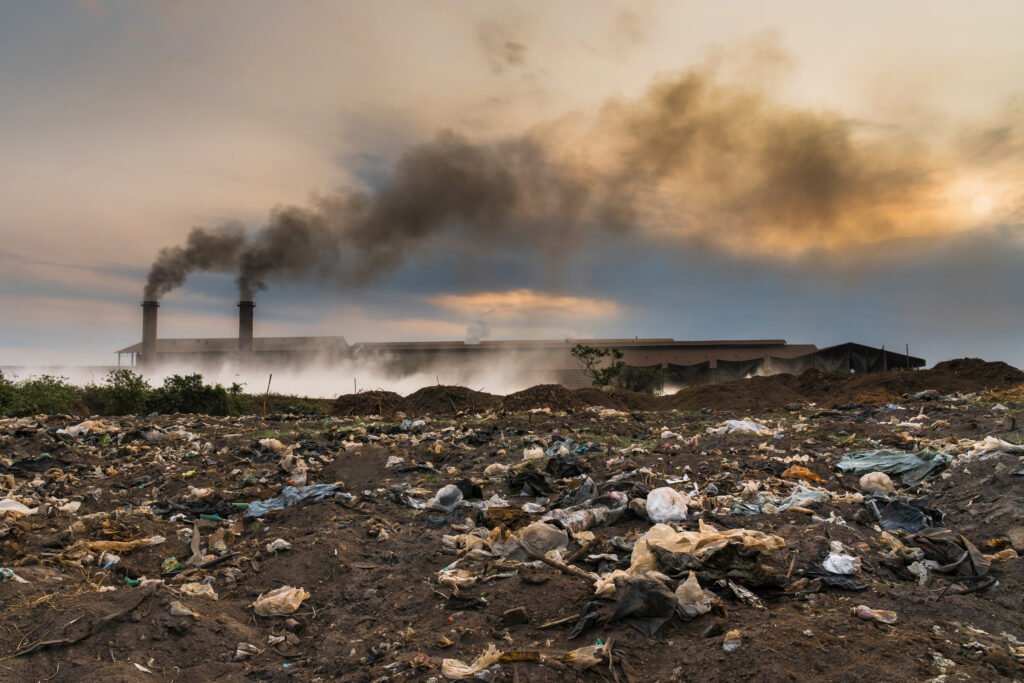How Sustainable Fashion Helps the Environment
Sustainable fashion represents an approach to fashion design, production, and consumption that aims to reduce environmental and social impacts. With the rise in global awareness about climate change and ecological degradation, the fashion industry, known for its substantial environmental footprint, has increasingly come under scrutiny. Sustainable fashion addresses these concerns through various practices that promote environmental stewardship, resource efficiency, and social responsibility. This blog explores how sustainable fashion helps the environment, highlighting the key strategies and benefits associated with this movement.
The Environmental Impact of Conventional Fashion
To understand the benefits of sustainable fashion, it is essential first to recognize the environmental impact of conventional fashion. The fashion industry is one of the largest polluters in the world. It significantly contributes to water pollution, carbon emissions, and waste production.
Water Pollution and Consumption
The production of textiles, particularly cotton, requires vast amounts of water. The World Wildlife Fund (WWF) estimates that it takes about 20,000 liters of water to produce one kilogram of cotton, roughly equivalent to a single T-shirt and pair of jeans. Additionally, the dyeing and finishing processes in textile manufacturing release a plethora of harmful chemicals into water bodies. These chemicals, including heavy metals and azo dyes, pose severe risks to aquatic life and human health.
Carbon Emissions
The fashion industry is responsible for approximately 10% of global carbon emissions. The energy-intensive processes of fiber production, fabric manufacturing, garment assembly, and transportation contribute to this significant carbon footprint. Synthetic fibers, such as polyester, are derived from fossil fuels, further exacerbating greenhouse gas emissions.

Waste Production
Fast fashion has led to a culture of disposability, where consumers frequently purchase and discard clothing. This trend results in enormous amounts of textile waste. According to the Environmental Protection Agency (EPA), about 85% of all textiles in the United States are either discarded in landfills or incinerated. The decomposition of textiles in landfills generates methane, a potent greenhouse gas, while incineration releases toxic pollutants.
Principles of Sustainable Fashion
Sustainable fashion aims to mitigate these environmental impacts through several key principles. These principles include the use of eco-friendly materials, ethical production practices, waste reduction strategies, and sustainable consumption patterns.
Eco-Friendly Materials
One of the primary strategies in sustainable fashion is the use of eco-friendly materials. These materials are either renewable, biodegradable, or recycled, and they often require fewer resources to produce. Examples include organic cotton, hemp, bamboo, and recycled fibers.
Organic Cotton
Organic cotton is grown without the use of synthetic pesticides and fertilizers, reducing soil and water contamination. It also employs crop rotation and biological pest control, promoting soil health and biodiversity.
Hemp
Hemp is a highly sustainable crop that requires minimal water and no synthetic fertilizers or pesticides. It grows quickly and is highly resilient, making it an excellent alternative to conventional cotton.
Bamboo
Bamboo grows rapidly and does not require pesticides or fertilizers. It is also biodegradable, making it an environmentally friendly option for textiles. However, it is crucial to ensure that bamboo processing methods are sustainable, as some methods can be chemically intensive.
Recycled Fibers
Recycled fibers, such as recycled polyester and nylon, reduce the need for virgin materials and minimize waste. These fibers are often derived from post-consumer waste, such as plastic bottles and discarded garments, thus helping to reduce landfill waste.
Ethical Production Practices
Sustainable fashion also emphasizes ethical production practices. These practices ensure that workers in the fashion supply chain are treated fairly and that environmental standards are upheld.
Fair Labor Conditions
Ensuring fair labor conditions involves providing safe working environments, fair wages, and reasonable working hours. Brands committed to ethical production often seek certification from organizations such as Fair Trade or the Global Organic Textile Standard (GOTS).
Environmentally Responsible Manufacturing
Environmentally responsible manufacturing involves minimizing energy use, reducing water consumption, and managing waste effectively. Techniques such as closed-loop water systems and renewable energy sources are employed to reduce the environmental footprint of production facilities.

Waste Reduction Strategies
Waste reduction is a crucial component of sustainable fashion. Strategies to minimize waste include upcycling, recycling, and designing for durability.
Upcycling
Upcycling involves creatively reusing materials to create new products. This process extends the life cycle of materials and reduces the need for virgin resources. Designers often use discarded textiles and garments to create unique, high-quality pieces.
Recycling
Recycling involves converting waste materials into new products. In fashion, this can include recycling textiles, plastics, and other materials into fibers for new garments. Advanced technologies, such as chemical recycling, are emerging to improve the efficiency and quality of recycled fibers.
Designing for Durability
Designing for durability means creating garments that are long-lasting and timeless. This approach encourages consumers to buy fewer, higher-quality items that they can wear for years. It also involves using durable materials and construction techniques that withstand wear and tear.
Sustainable Consumption Patterns
Promoting sustainable consumption patterns is essential for reducing the environmental impact of fashion. This involves encouraging consumers to make mindful purchasing decisions, care for their garments properly, and participate in circular fashion systems.
Mindful Purchasing
Mindful purchasing encourages consumers to buy fewer, better-quality items. It involves considering the environmental and social impacts of a garment before making a purchase. Consumers are encouraged to support brands that prioritize sustainability and ethical practices.
Garment Care
Proper garment care can extend the life of clothing and reduce its environmental impact. This includes washing clothes less frequently, using cold water, air drying, and repairing items when needed. These practices reduce water and energy consumption and minimize textile waste.
Circular Fashion Systems
Circular fashion systems aim to create a closed-loop system where garments are continually reused, recycled, or repurposed. This approach contrasts with the traditional linear model of “take, make, dispose.” Circular systems involve initiatives such as clothing rental, resale, and take-back programs, where brands collect and recycle old garments.
Benefits of Sustainable Fashion for the Environment
The adoption of sustainable fashion practices offers numerous benefits for the environment. These benefits include reduced resource consumption, decreased pollution, lower carbon emissions, and minimized waste.
Reduced Resource Consumption
Sustainable fashion significantly reduces the consumption of natural resources. Eco-friendly materials, such as organic cotton and hemp, require less water and fewer chemicals than conventional materials. Additionally, using recycled fibers reduces the need for virgin resources and minimizes the environmental impact of raw material extraction.
Decreased Pollution
By using non-toxic dyes and sustainable processing methods, sustainable fashion reduces water pollution. Organic farming practices decrease soil and water contamination, and closed-loop water systems in manufacturing prevent harmful chemicals from entering waterways. These measures help protect aquatic ecosystems and improve water quality.
Lower Carbon Emissions
Sustainable fashion practices contribute to lower carbon emissions. Renewable energy sources, energy-efficient production methods, and the use of recycled materials all help to reduce the industry’s carbon footprint. Furthermore, promoting local production and reducing transportation distances can further decrease emissions associated with the fashion supply chain.
Minimized Waste
Sustainable fashion reduces waste through strategies such as upcycling, recycling, and designing for durability. These practices extend the life cycle of materials and products, diverting waste from landfills and reducing the demand for new resources. Circular fashion systems also contribute to waste reduction by promoting the reuse and repurposing of garments.
Challenges and Opportunities in Sustainable Fashion
Despite its benefits, the transition to sustainable fashion faces several challenges. These challenges include high production costs, limited consumer awareness, and the complexity of supply chains. However, these challenges also present opportunities for innovation and collaboration.
High Production Costs
Sustainable fashion often incurs higher production costs due to the use of eco-friendly materials and ethical labor practices. These costs can make sustainable garments more expensive for consumers, potentially limiting their market reach. However, economies of scale and advancements in sustainable technologies can help reduce these costs over time.
Limited Consumer Awareness
Many consumers are still unaware of the environmental and social impacts of their fashion choices. Educating consumers about the benefits of sustainable fashion and encouraging mindful purchasing can help drive demand for sustainable products. Brands can play a crucial role in raising awareness through transparent communication and marketing efforts.
Complex Supply Chains
The fashion supply chain is complex and involves multiple stakeholders, from raw material producers to garment manufacturers and retailers. Ensuring sustainability across the entire supply chain requires collaboration and transparency. Innovations such as blockchain technology can help track and verify the sustainability of products throughout the supply chain.
Opportunities for Innovation
The challenges of sustainable fashion also present opportunities for innovation. Advances in materials science, such as the development of bio-based and lab-grown fibers, offer new possibilities for sustainable textiles. Technology can also enhance supply chain transparency and efficiency, while new business models, such as clothing rental and resale, promote circular fashion systems.

Case Studies in Sustainable Fashion
Several brands and initiatives exemplify the principles of sustainable fashion and highlight its benefits for the environment. These case studies illustrate the potential of sustainable fashion to drive positive change in the industry.
Patagonia
Patagonia is a pioneer in sustainable fashion. The company is committed to using eco-friendly materials, such as organic cotton and recycled polyester. Patagonia also promotes fair labor practices and transparency in its supply chain. The brand’s Worn Wear program encourages consumers to repair, reuse, and recycle their garments, supporting a circular fashion system.
Stella McCartney
Stella McCartney is known for her commitment to sustainability. The brand avoids using animal products and employs innovative materials, such as vegan leather and recycled fibers. Stella McCartney also prioritizes ethical production practices and works to reduce the environmental impact of its supply chain.
Eileen Fisher
Eileen Fisher focuses on sustainability through the use of organic and recycled materials, as well as ethical production practices. The brand’s Renew program collects worn Eileen Fisher garments, repairs them, and resells them, promoting a circular fashion system. Eileen Fisher is also dedicated to reducing waste and minimizing its carbon footprint.
H&M Conscious Collection
H&M’s Conscious Collection aims to make sustainable fashion accessible to a broader audience. The collection features garments
made from eco-friendly materials, such as organic cotton and recycled polyester. H&M also promotes transparency in its supply chain and has launched initiatives to collect and recycle old garments from customers.
The Future of Sustainable Fashion
The future of sustainable fashion is promising, with growing awareness and innovation driving the industry forward. As consumers increasingly prioritize sustainability, brands are compelled to adopt more eco-friendly and ethical practices. Collaboration across the industry, along with supportive policies and regulations, can further accelerate the transition to sustainable fashion.
Consumer Demand
Consumer demand for sustainable fashion is on the rise. Millennials and Gen Z, in particular, are more likely to prioritize sustainability in their purchasing decisions. This shift in consumer behavior encourages brands to adopt sustainable practices and develop environmentally friendly products.
Technological Advancements
Technological advancements play a crucial role in the future of sustainable fashion. Innovations in materials science, such as biodegradable fabrics and lab-grown leather, offer new possibilities for sustainable textiles. Additionally, digital technologies, such as blockchain and artificial intelligence, can enhance supply chain transparency and efficiency.
Policy and Regulation
Supportive policies and regulations can help drive the adoption of sustainable fashion practices. Governments can incentivize sustainable production through subsidies, tax breaks, and grants. Regulations that set standards for environmental and social responsibility in the fashion industry can also promote sustainability.
Industry Collaboration
Collaboration across the fashion industry is essential for achieving sustainability. Brands, suppliers, NGOs, and policymakers must work together to develop and implement sustainable practices. Industry initiatives, such as the Sustainable Apparel Coalition and the Fashion Pact, promote collaboration and set collective goals for sustainability.
Sustainable fashion offers a compelling solution to the environmental challenges posed by the conventional fashion industry. By prioritizing eco-friendly materials, ethical production practices, waste reduction strategies, and sustainable consumption patterns, the fashion industry can significantly reduce its environmental footprint. While challenges remain, the growing demand for sustainable fashion, coupled with technological advancements and supportive policies, paves the way for a more sustainable and responsible future. As consumers, brands, and policymakers continue to embrace sustainability, the positive impact of sustainable fashion on the environment will only grow.









